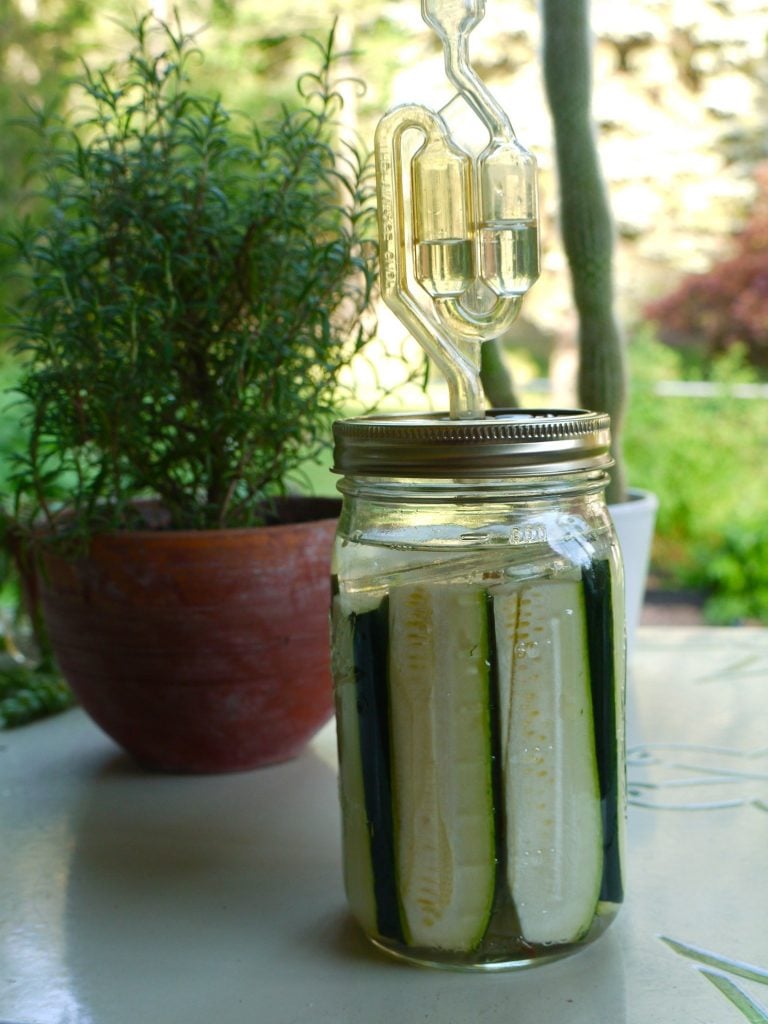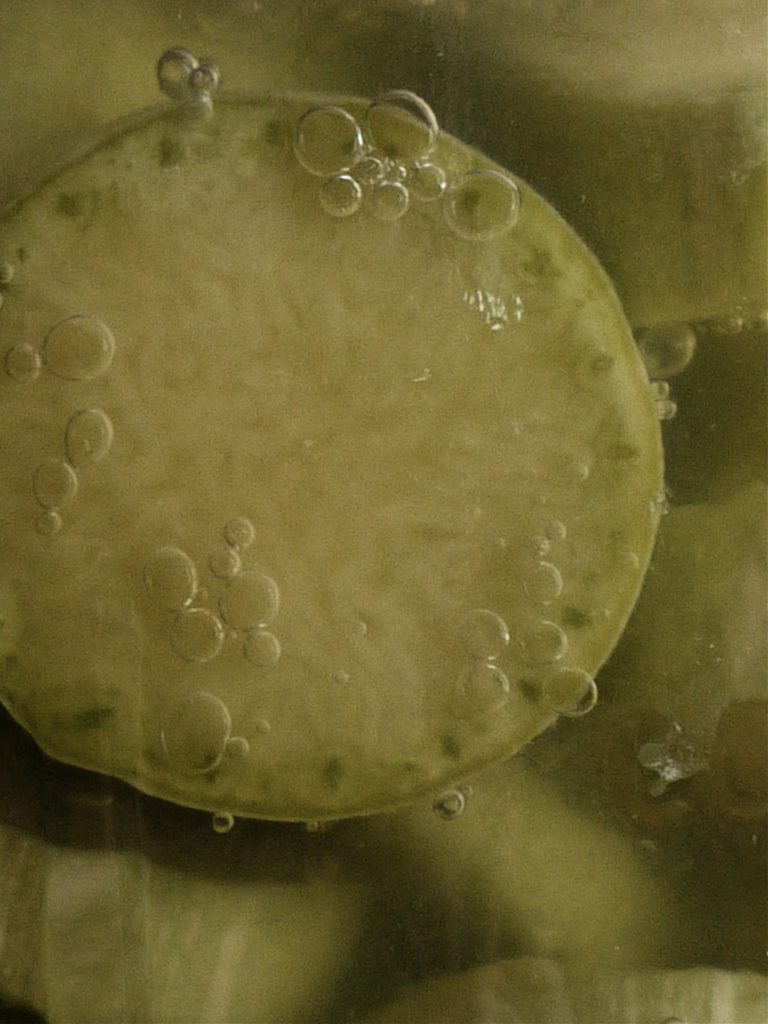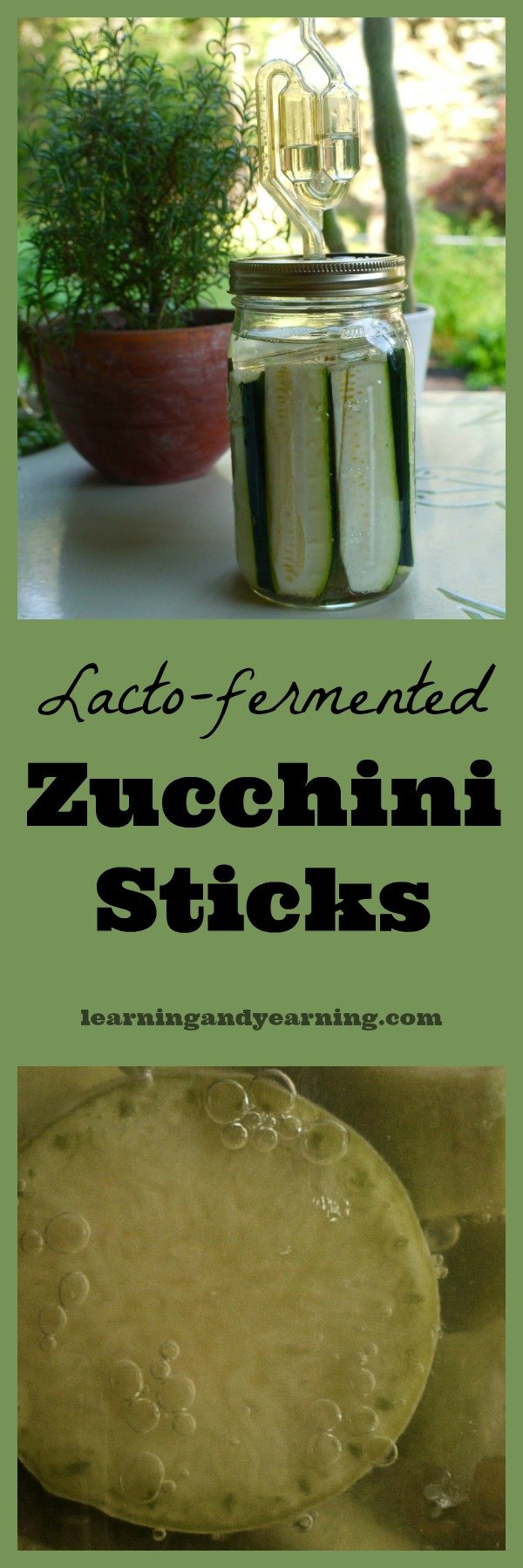
Why ferment cucumbers and squash, rather than just pickle them? Lacto-fermented vegetables are more nutritious and, I think, much more tasty.
Pickles, to me, have always been one of those “take it or leave it” foods. But I love fermented vegetables. Up until a hundred years ago, or so, much food was preserved through fermentation. Canning and vinegar pickling are more shelf stable and more suited to the modern grocery store. But we have lost so much in the area of nutrition. In The Complete Idiot’s Guide to Fermenting Foods, Wardeh Harmon says:
DISCLOSURE: In order for me to pay my blogging expenses, I may receive monetary compensation for my endorsement and/or link to products mentioned on this blog. I am a participant in the Amazon Services LLC Associates Program, an affiliate advertising program designed to provide a means to earn fees by linking to Amazon.com and affiliated sites.
Traditional fermentation yields extremely nutritious foods. In contrast, modern pickled foods are essentially dead. No time or organisms are allowed to work on the food to yield beneficial acids, to create more nutrients, or to break down hard-to-digest food substances. When subjected to high-heat canning or pasteurization, vitamins, enzymes, and beneficial organisms are lost. White vinegar, used in modern pickling, is an overly acidic food with no nutritional benefits. By contrast, the acids produced by traditional fermentation are nutritious.
The other benefit is that fermenting is so much easier than canning. And on a hot summer day when I’ve spent the morning in the garden harvesting, I do not want to spend the afternoon in a hot kitchen.
Fermented vegetables are not cooked and enzymes are not destroyed. And I do not break a sweat preserving food this way.

How to Make Lacto-fermented Zucchini Sticks
Cut the squash into sticks or rounds that will easily fit into a wide mouth canning jar leaving about 2″ at the top.
Add a few cloves of garlic, or chunks of onion if desired. A few red pepper flakes are also a nice addition.
Fill the jar pushing down on the vegetables as necessary.
Make a brine by mixing 3 Tablespoons sea salt with 4 cups of filtered water. Do not use chlorinated water, which will hinder the fermentation process.
Thoroughly mix the brine and pour over the squash in the canning jar leaving at least an inch of head space at the top.
To keep the squash crisp, a grape or oak leaf may be added. Place a fermentation weight on top of the leaf to keep everything submerged. This post has lots of ideas for weights.
Cover with an airlock and put in a dark spot (ie. a kitchen cabinet) for 3 – 5 days. You can even make your own airlock.
If you don’t have an airlock system you can cover loosely so that gases can escape. Yes, this process can cause an explosion. After 3 -5 days, refrigerate. The fermented vegetables will keep for months in the refrigerator.
More on Lacto-Fermentation
Fermentation Weights: 10 Ways to Keep Your Ferments Submerged

Original article and pictures take learningandyearning.com site
Комментариев нет:
Отправить комментарий